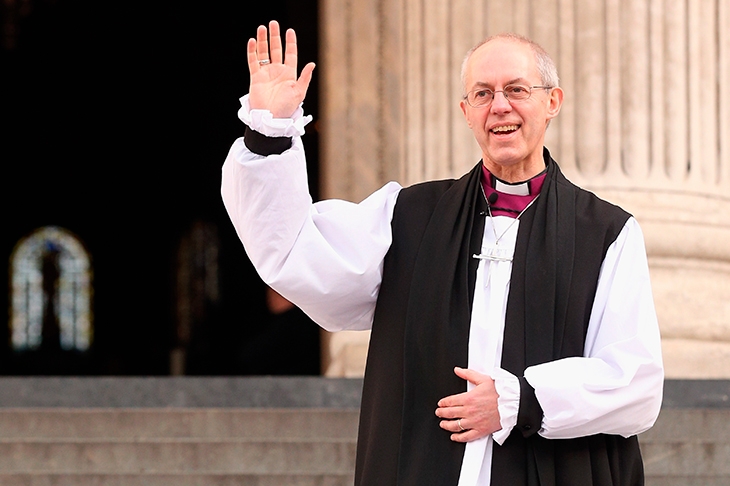This week, the Church of England issued its document ‘Contested Heritage in Cathedrals and Churches’. It is guidance for what those locally running more than 12,000 churches should do about their monuments ‘to transform unjust structures of society, to challenge violence of every kind and pursue peace and reconciliation’ and address ‘the Church’s own complicity in structural sin’ and ‘oppression or marginalisation of people on the basis of their race, gender, religion or sexual orientation’. In church monuments, this usually boils down to whether the person commemorated had links with slavery. Seen from a parish level (where the poor churchwardens, such as my dear wife, will have to do the work), here are some preliminary questions. By whom is the heritage ‘contested’? Of those 12,000 churches, how many have previously suffered from protests about monuments? Why does the Church invite contestation if it desires ‘peace and reconciliation’? Almost no one who worships in a particular parish wants its church monuments altered. Does Archbishop Welby expect each parochial church council to inspect its monuments to see if they commemorate bad people? Then there is the question of money. Moving, removing or altering a monument is, rightly, a matter of church law, and requires a ‘faculty’. The process is slow, involving expert advice, conservation costs (once you take down a historic monument, you cannot just throw it away), building costs and legal costs. These can run into tens of thousands of pounds, way beyond the capacity of almost all churches, especially rural ones. Who will pay? How? Rather than sternly extirpating a few monuments, why doesn’t the Church encourage parishes to celebrate most of them? They provide sermons in often beautiful stones.
At national level, there are questions too. Why should Anglican ‘structural sin’ be confined to issues of race and gender? The biggest specific way in which the Church profited from violence and oppression was through the Reformation. Every church built before that time still bears the scars. Powerful lords temporal and spiritual grabbed monastic land, buildings and treasures. Archbishops of Canterbury encouraged the persecution and killing of Catholics. Should their monuments come down? I am a Catholic myself, but I have no desire to stir up such a hornets’ nest. Yet that is the logic. There is also the law to consider. At present, the Church enjoys ‘Ecclesiastical Exemption’ from normal heritage planning laws. If the Church plays politics with its own works of art, does it deserve its exemption? The secular state might have to step in to protect the artistic heritage which the Church seeks to efface.
If the bishops must admonish their dwindling congregations, would it not be simpler and cheaper just to revive the service of Commination, which lies, little used, in the Book of Common Prayer. (‘Cursed is he that removeth his neighbour’s landmark’ etc.) The service praises the old version of naming and shaming by which ‘such persons as stood convicted of notorious sin were put to open penance’. Surely it could be modernised to curse Boris, Brexit, ‘Rule, Britannia’ and anything else that is on their minds.
‘If Boris Johnson and Carrie Symonds don’t now help me ban lion-hunting trophies, it will be a dereliction of duty,’ says Lord Ashcroft in a newspaper article this week. It seems an odd way to put it. It is not the duty of the Prime Minister to help Lord Ashcroft, mighty though he may be; and it is the positive duty of Carrie Symonds not to help frame any legislation about anything. The trophy ban, proposed in the Queen’s Speech, seems a perfect example of legislation by gesture — in other words, of bad law. If you are allowed to shoot a lion in a foreign country, why should you not be allowed to import the trophy? Besides, it is arguable that the shooting of big game under law offers a better future for the species than killing by poachers, because it permits economic incentives to preserve them. Certainly, legal game-shooting is likely to be much less cruel, because conducted under enforceable rules, than illicit killing. Lord Ashcroft, possibly rightly, hates ‘the captive-bred lion industry’, but how does his trophy ban stop it? For some reason I cannot quite define, I feel a positive horror of shooting big cats or elephants, although I enjoy stalking deer. I correspondingly don’t want to see stuffed lions on walls. Many people feel the same, but such feelings are personal or aesthetic, and therefore an unsuitable basis for laws. They do not improve the lot of the species.
Four years ago, Jamie Blackett published a fascinating biography of Michael Kidson, an eccentric and much-loved Eton history master, who had been brought up by his grandfather after his parents split up when he was an infant and disappeared. Kidson never forgave his mother, thinking she had deserted him. It was subsequently discovered, however (see Notes, 13 October 2018), that the poor woman had been sent to prison for fraud, probably committed in desperation after she was herself deserted, in order to feed her infant son. Now comes a further twist. Ian Smith, who found out about the mother, has discovered that Kidson too was convicted of a crime. In 1951, aged 22, he pleaded guilty to Ludlow magistrates of using forged School and Higher Certificates (the equivalent of modern GCSE and A-levels) in order to get into Oxford. It emerged in court that, under his grandfather’s will, he would come into ‘several monies’ only if he had attended university. He was conditionally discharged. In his book, Blackett records that Kidson passed the Oxford exam, yet did not go up. Mr Smith’s revelation explains why. Somehow or other, however, Kidson got into Gonville and Caius College, Cambridge, two years later. I wonder if Caius, or, much later, Eton, winked at all of this. If so, it was mercy well justified.







Comments